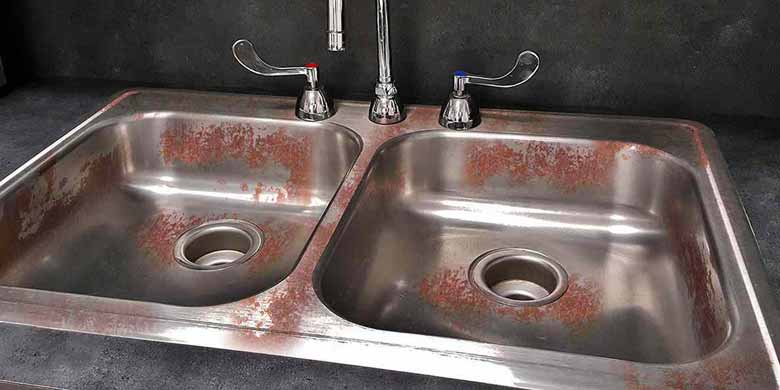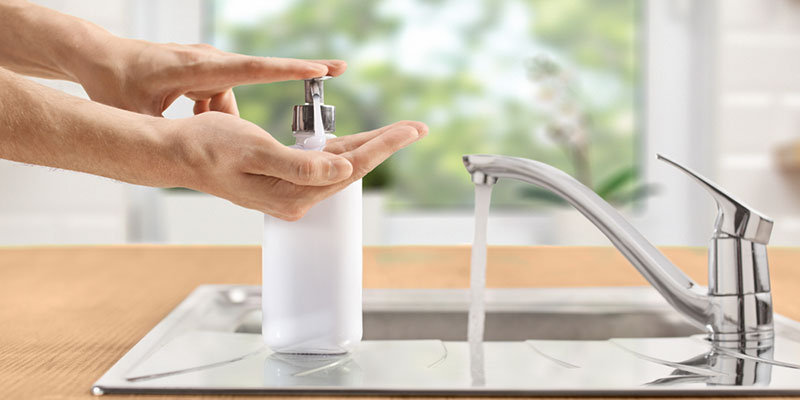Why Does Stainless Steel Rust

Stainless steel rust can be a significant problem in applications where the steel is exposed to high levels of moisture, salt, or chemicals, such as in marine environments or in contact with certain cleaning products. Proper maintenance and care of stainless steel, including regular cleaning, protection from corrosive environments, and appropriate alloy selection, can help prevent rust and ensure the long-term durability and appearance of the steel.
Stainless Steel
Stainless steel is a type of steel alloy that contains a minimum of 10.5% chromium content by mass. The chromium in the steel reacts with oxygen in the air to form a thin, transparent layer of chromium oxide on the surface of the steel, which protects it from corrosion and staining.
Stainless steel is valued for its corrosion resistance, durability, and strength. It is used in a wide range of applications, including kitchen appliances, cutlery, medical equipment, construction materials, automotive parts, and more. Stainless steel is available in various grades and finishes, each with different levels of corrosion resistance, strength, and other properties.
Why Does Stainless Steel Rust
Stainless steel is known for its corrosion resistance, but it is not completely immune to the effects of corrosion. In certain conditions, stainless steel can rust, which can lead to the deterioration of the material over time.
Stainless steel contains a minimum of 10.5% chromium, which reacts with oxygen in the air to form a thin, transparent layer of chromium oxide on the surface of the steel. This layer, also known as the passive layer, is what gives stainless steel its corrosion resistance. The passive layer is self-repairing and will reform when damaged, which helps to protect the steel from further corrosion.
If the passive layer is damaged or compromised, the underlying steel can be exposed to the environment, leading to rusting. The most common causes of stainless steel rusting include:
- Exposure to chlorides: Chlorides, such as those found in saltwater or certain cleaning products, can break down the passive layer and lead to corrosion. Stainless steel that is exposed to saltwater or marine environments is particularly susceptible to rusting.
- High temperatures: High temperatures can cause the passive layer to break down, leading to corrosion. This can be a problem in applications such as welding or heat treating.
- Mechanical damage: Mechanical damage, such as scratches or gouges, can break down the passive layer and expose the steel to the environment.
- Poor quality steel: Poor quality stainless steel may not have the proper levels of chromium or other alloying elements, which can make it more susceptible to corrosion.
To prevent stainless steel from rusting, it is important to choose the appropriate grade of stainless steel for the application, avoid exposure to corrosive environments, and properly maintain the steel to ensure that the passive layer remains intact. If rusting does occur, it can often be removed with a mild abrasive or a rust-removing solution, followed by proper cleaning and maintenance to prevent further corrosion.
Stainless Steel Rust Prevention
Stainless steel is known for its corrosion resistance, but it still requires proper maintenance and care to prevent rusting. Here are some tips for preventing rust in stainless steel:
- Choose the appropriate grade of stainless steel: Different grades of stainless steel have different levels of corrosion resistance. For applications in corrosive environments, such as marine or chemical environments, it is important to choose a high-grade stainless steel that is appropriate for the specific conditions.
- Avoid exposure to chlorides: Chlorides, such as those found in saltwater or certain cleaning products, can break down the passive layer and lead to corrosion. Avoid exposing stainless steel to chlorides and rinse thoroughly with fresh water after exposure to saltwater or cleaning products.
- Keep the surface clean: Dirt, grime, and other contaminants can trap moisture and break down the passive layer, leading to corrosion. Regular cleaning with mild soap and water or a stainless steel cleaner can help prevent rusting.
- Protect the surface: Applying a protective coating, such as a clear coat or wax, can help prevent moisture from coming into contact with the stainless steel surface and protect the passive layer.
- Avoid mechanical damage: Scratches, dents, and other forms of mechanical damage can break down the passive layer and expose the steel to the environment. Avoid using abrasive materials or harsh chemicals on stainless steel, and handle the material with care to avoid damage.
- Use proper storage and handling techniques: Stainless steel should be stored in a dry, well-ventilated area away from corrosive materials. Avoid stacking stainless steel items on top of each other, as this can trap moisture and lead to corrosion.
By following these tips and properly maintaining stainless steel, you can help prevent rusting and ensure that your stainless steel items remain in good condition for years to come.
Factors Affecting Rust on Stainless Steel
Stainless steel is known for its resistance to corrosion, but it can still rust under certain conditions. Several factors can affect the formation of rust on stainless steel, including:
- Environment: The environment in which the stainless steel is used is one of the most critical factors affecting its corrosion resistance. Stainless steel is susceptible to rusting in environments with high levels of moisture, salt, and chemicals. Exposure to chlorides, such as those found in saltwater or cleaning products, can break down the protective layer of chromium oxide and lead to corrosion.
- Surface Finish: The surface finish of stainless steel can also affect its corrosion resistance. Rough surfaces, such as those created by abrasive blasting or grinding, can trap contaminants and moisture, leading to corrosion. Smooth, polished surfaces are less likely to trap contaminants and are easier to clean, which can help prevent corrosion.
- Alloy Composition: The composition of the stainless steel alloy can affect its corrosion resistance. Higher levels of chromium, molybdenum, and nickel provide greater resistance to corrosion.
- Temperature: High temperatures can accelerate the breakdown of the protective layer of chromium oxide and lead to corrosion. This is particularly true for stainless steel used in high-temperature applications, such as heat exchangers and boilers.
- Stress: Stress on the stainless steel, such as that caused by welding or bending, can also affect its corrosion resistance. Stress can cause the passive layer to break down, exposing the steel to the environment and leading to corrosion.
- Cleaning and Maintenance: Proper cleaning and maintenance are critical to maintaining the corrosion resistance of stainless steel. Contaminants and moisture can accumulate on the surface of stainless steel, breaking down the protective layer and leading to corrosion. Regular cleaning with mild soap and water or a stainless steel cleaner can help prevent corrosion.
By considering these factors and taking appropriate measures to prevent corrosion, stainless steel can provide excellent corrosion resistance in a wide range of applications.
Final Thought
Stainless steel is a highly durable and corrosion-resistant material that is widely used in a variety of applications. However, it is not immune to rust and can corrode under certain conditions.
Proper maintenance and care, including selecting the appropriate alloy, protecting it from corrosive environments, and regular cleaning, can help prevent rust and ensure the long-term durability and appearance of the steel.
By understanding the factors that contribute to rust on stainless steel, it is possible to take appropriate measures to prevent corrosion and ensure that stainless steel continues to be a reliable and high-performance material for a wide range of applications.



